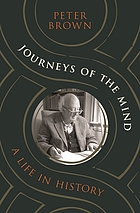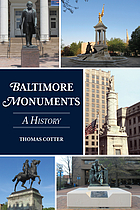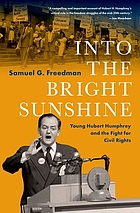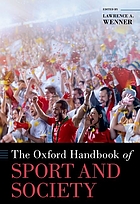Introducing The Friday List! Every week, new books are arriving at RLB Library and to keep you up-to-date on what has come in, we’ll be posting the most recent 30 days of arrivals every Friday. The link below will take you to a catalog listing so that you can explore and find titles that interest you. Be sure to check back regularly to see what else has arrived!
THE FRIDAY LIST
If you want some ideas on what to read, here are some highlights:

Journeys of the mind : a life in history (ebook), Peter Brown, 2023
An intellectual autobiography by Peter Brown, one of the most eminent historians of the last 50 years, who is credited with having created the field of study know as Late Antiquity, the period during which Rome fell, the three major monotheistic religions took shape, and Christianity spread across Europe situating it in the major developments in historiography and the study of the religion in the 20th century and the minds behind them.

Baltimore monuments : a history, Thomas Cotter, 2023
From its beginning as a small town on the banks of the Patapsco River in 1729, Baltimore has played a significant role in the development of the United States. To commemorate those persons or events that have contributed to the city and the nation’s history, Baltimore was the first American city to build public monuments. Persons honored by these monuments have included artists, entertainers, athletes, civic leaders, government officials, military veterans, public servants, religious leaders, social reformers, and war heroes. Local historian Thomas Cotter discusses the history of each monument, its origin, notable designers, funding methods, dedication ceremony, and a description of the monument itself.

Into the bright sunshine : young Hubert Humphrey and the fight for civil rights (ebook), Samuel G Freedman, 2023
From one of the country’s most distinguished journalists, here is a revisionist and riveting look at the American politician whom history has judged a loser, yet who played a key part in the greatest social movement of the 20th century. During one sweltering week in July 1948, the Democratic Party gathered in Philadelphia for its national convention. The most pressing and controversial issue facing the delegates was not whom to nominate for president – the incumbent, Harry Truman, was the presumptive candidate – but whether the Democrats would finally embrace the cause of civil rights and embed it in their official platform. Even under Franklin Roosevelt, the party had dodged the issue in order to keep a bloc of Southern segregationists – the so-called Dixiecrats – in the New Deal coalition.

The Oxford handbook of sport and society, Lawrence A Wenner(Editor), 2022
The Oxford Handbook of Sport and Society features leading international scholars’ assessments of scholarly inquiry about sport and society. Divided into six sections, chapters consider dominant issues within key areas, approaches (theory and method) featured in inquiry, and debates needing resolution. Part I: Society and Values considers matters of character, ideology, power, politics, policy, nationalism, diplomacy, militarism, law, ethics, and religion. Part II: Enterprise and Capital considers globalization, spectacle, mega-events, Olympism, corruption, impacts on cities, communities, and the environment, and the press of leadership cultures, economic imperatives, and marketing. Part III: Participation and Cultures considers questions of health and well-being, violence, the medicalization of injury, influences of science and technology, substance use and abuse, the roles of coaching and emotion, challenges of child maltreatment, climates for scandal and athlete activism, and questions over animals in sporting competition. Part IV: Lifespan and Careers considers child socialization, youth and elite athlete development, the roles of sport in education and social mobility, migratory sport labor practices, arcs defining athletic careers, aging, and retirement, and emergent lifestyle sport cultures. Part V: Inclusion and Exclusion considers sport’s role in social inclusion and exclusion, development and discrimination, and features treatments of race and ethnicity, indigenous experiences, the intersection of bodily ideals, obesity, and disability, and the gendered impacts on masculinities, femininities, and non-binary experience. Part VI: Spectator Engagement and Media considers sporting heroism and celebrity, fandom and hooliganism, gambling and match-fixing, and the influences of sport journalism, television and film treatments, advertising, and new media.